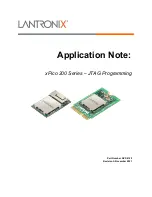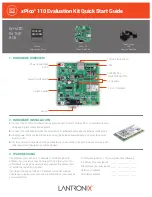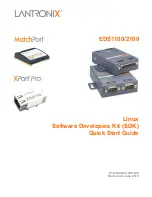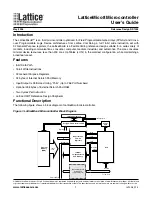GD32F403xx User Manual
544
on the SD interf ace. Pin number 8, which is used as SDIO_DAT[1] when operating in the 4-
bit SD mode, is used to signal the card’s interrupt to the host. The use of interrupt is optional
f or each card or f unction within a card.
The SD I/O interrupt is “level sensitive”, that is, the
interrupt line shall be held active (low) until it is either recognized and acted upon by the host
or de-asserted due to the end of the
Interrupt Period. Once the host has serviced the interrupt,
it is cleared via function unique I/O operation.
When setting the SDIO_DATACTL[11] bit SD I/O interrupts can detect on the SDIO_DAT[1]
line.
Figure 20-15. Read Interrupt cycle timing
shows the timing of the interrupt period for single
data transaction read cycles.
Figure 20-15. Read Interrupt cycle timing
SDIO_CLK
DAT0
Command read data
2 CLK
CMD
DAT1
DAT1(mode)
S
E
Response
S
E
Command read data
S
E
Data
S
E
Data
S
E
interrupt
data
data
Figure 20-16. Write interrupt cycle timing
SDIO_CLK
DAT0
Command write data
2 CLK
CMD
DAT1
DAT1(mode)
S
E
Response
S
E
Data
S
E
interrupt
data
interrupt
Data
S
E
Command write data
S
E
CRC
S
E
When transferring multiple blocks of data in the 4-bit SD mode, a special definition of the
interrupt period is required. In order to allow the highest speed of communication, the interrupt
period
is limited to a 2-clock interrupt period. Card that wants to send an interrupt signal to
the host shall assert DAT1 low for the first clock and high for the second clock. The card shall
then release DAT1 into the hi-Z State.
Figure 20-17. Multiple block 4-Bit read interrupt
shows the operation for an interrupt during a 4-bit multi-block read and
20-18. Multiple block 4-Bit write interrupt cycle timing
shows the operation for an interrupt


















